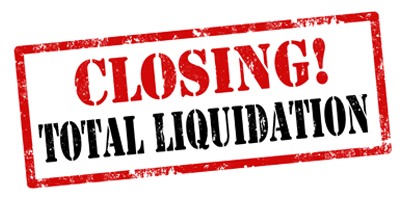The Greatest Guide To Company Liquidation
Table of ContentsMore About Company LiquidationSome Known Details About Company Liquidation The Ultimate Guide To Company LiquidationHow Company Liquidation can Save You Time, Stress, and Money.Not known Facts About Company Liquidation
A liquidator is specifically assigned to oversee the ending up of a business's affairs in order for it to be shut down commonly when the firm is going insolvent. The liquidator is an objective 3rd party that supervises the sale of company properties in order to repay any type of superior financial debts.Their function includes, yet is not limited to: Objective Overseer: A liquidator is entrusted with functioning as an unbiased 3rd party to supervise the entire business liquidation process. Produce Declaration of Affairs: Liquidators must produce a comprehensive declaration of affairs document. This record is distributed to financial institutions, detailing the present financial status of the organization at the time of its liquidation.
After the liquidation of a business, its presence is erased from Business Residence and it ceases to be a lawful entity. If supervisors navigated the process uncreative, there would be no charges or individual liability for solid financial debts anticipated. Currently, with a clean slate, directors can discover brand-new organization opportunities, though specialist assessment is suggested.
Company Liquidation - The Facts
If even more than 90% of all business investors agree, liquidation can take place on brief notice within 7 days, the minimum legal notice for creditors. Usually, the larger the liquidation and the more assets and capital the company has, the longer the process will take.
:max_bytes(150000):strip_icc()/Liquidation-4193561-Final-699e67d885c243c39cac2985b16d51cb.jpg)
We understand that no 2 firms are the same, which is why we will certainly put in the time to learn more about your organization so we can recommend the best training course of activity for you. We just operate in your benefits, so you can be completely certain in the service we provide.
An Unbiased View of Company Liquidation
In the UK, there is a set procedure to closing down or restructuring a restricted business, whether it is solvent or bankrupt. This procedure is called liquidation and can just be taken care of by a certified insolvency specialist (IP) in accordance with the Insolvency Act 1986. There are four main kinds of company liquidation process: Creditors' Voluntary Liquidation (CVL); Required liquidation; Management; and Participants' blog Volunteer Liquidation (MVL).

In these scenarios, it is essential that the business stops trading; if business remains to trade, the supervisors can be held directly responsible and it could cause the bankruptcy expert reporting wrongful trading, recognized as misfeasance, which may lead to legal activity. The directors select an insolvency specialist and once this has been agreed and verified, there is a meeting with the shareholders.
The supervisors are no longer included in what takes place, consisting of the sale of the firm's properties. If the directors desire any of the properties, they can inform the IP.
Examine This Report on Company Liquidation
The primary distinction is that the company's creditors used to the court for an ending up order which forces the financially troubled company into a liquidation process. In the majority of cases, lenders take this action as a last resort since they have not obtained repayment through various other forms of arrangement. The court appoints a bankruptcy practitioner, additionally called an official receiver, to carry out the required business liquidation procedure.
This kind of company liquidation is not volunteer and directors' conduct is reported to the UK's Secretary of State once the liquidation procedure has actually been completed. Any kind of director that stops working to work together with the IP or has actually been involved in supervisor transgression, or a deceitful act, may result in serious consequences.
It is used as a method to shield the business from any lawsuit by its financial institutions. The directors of the business agree to make normal payments to resolve their debts over an amount of time. web The assigned administrator takes care of the voluntary administration procedure, and obtains the payments which they then disperse to creditors according to the agreed amounts.
Get This Report about Company Liquidation
This supplies the business with time to develop a plan going forward to save the firm and stay clear of liquidation. At this factor, directors hand control of the business over to the appointed administrator. If Learn More Here a company is solvent but the supervisors and shareholders wish to shut business, a Members Voluntary Liquidation is the right option.
The company liquidation process is taken care of by a liquidator selected by the directors and investors of the business and they should sign an affirmation that there are no lenders remaining. The liquidation procedure for an MVL resembles that of a CVL because possessions are understood yet the earnings are dispersed to the directors and the investors of the business after the liquidator's fees have actually been paid.
Comments on “The Of Company Liquidation”